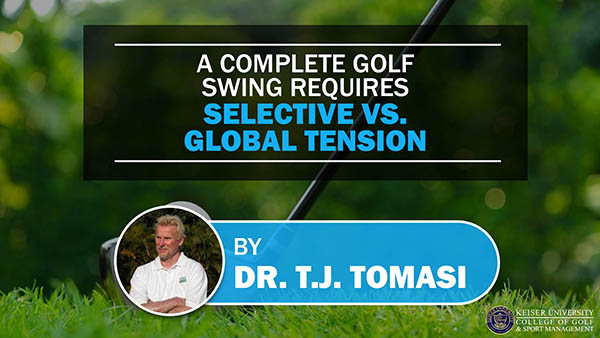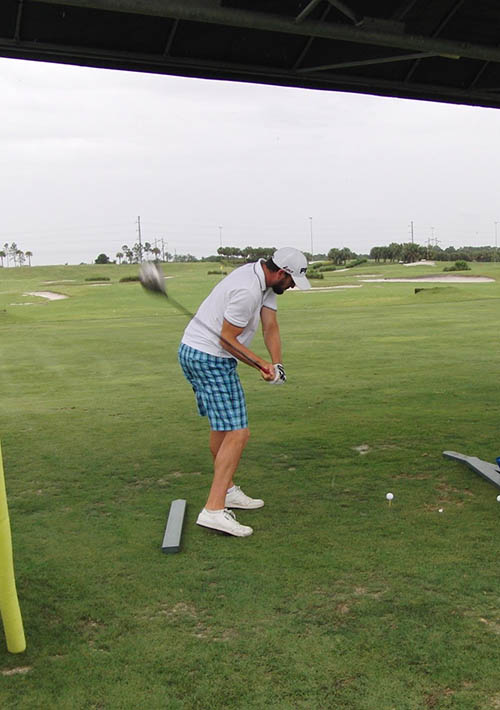A Complete Golf Swing Requires Selective vs. Global Tension

By Dr. T. J. Tomasi, Keiser University College of Golf Senior Faculty and Director of Research
When you make a golf swing, your goal is not to be totally rigid or completely relaxed, but some combination of the two. At address, for example, you should feel somewhere between tripwire-tense and limp, a feeling I call “selective tension,” where some of your muscles are tense and ready for action, while others are relaxed while waiting their turn. It must be this way because your movement muscles are arranged in pairs where, if one set is contracting, its antagonistic partner must be relaxed — e.g., when your biceps flex the arm; your triceps must be relaxed. If they both contract at once or if neither contracts, the arm can’t move.
Distress vs. Eustress
The mechanism of how an expert transfers power from the ground, up the legs, through the pelvis, to the shoulders, down the lead arm, along the shaft, and finally into the ball involves a process of speeding up (firing) one set of muscles, then quieting them down, so the energy flows to the next segment. And, here’s the big point: This process requires selective tension, where some muscles are firing, and others are relaxed.
Distress, where the butterflies are dive-bombing, affects the entire body, and because its effects are so global, it renders the kinematic sequence (described above) inoperable. Eustress, where the butterflies are flying in a controlled formation, is a non-global stress designed for the calm execution of a rehearsed, prearranged plan such as your golf swing.
The best way to beat body-wide tension is to spot-check the tension in your muscles progressively. Start at the top and let your jaw and face muscles go limp — and don’t ignore your tongue. Then relax your neck and shoulder muscles using a soft shrugging action. You should have an oily feeling in your wrists, with your arms hanging relaxed at address, like those of a gorilla. Your grip pressure, in a range from one to ten, should be about a six. Finally, shake your arms/hands/shoulders/legs one at a time to purge tension — the shake looks weird but works. Combine these tension-busters with a deep abdominal breath, and you can relax into a “flow of go.”

Here is an example of the proper flow of energy allowed by selective tension. This pro’s right biceps muscle is contracted and holding the angle very late in the downswing, as do all long hitters. Power includes the efficient use of biceps/triceps antagonistic pair – aka ‘timing,’ and power cannot be maxed out when you are globally tense. First biceps, then triceps, then pow. This is why training for modern professional golf includes strength training as well as relaxation techniques – “you can’t fire’um if you don’t have’um.”
If you’d like to study with Dr. Tomasi and other PGA Master Professionals, contact The College of Golf today.














